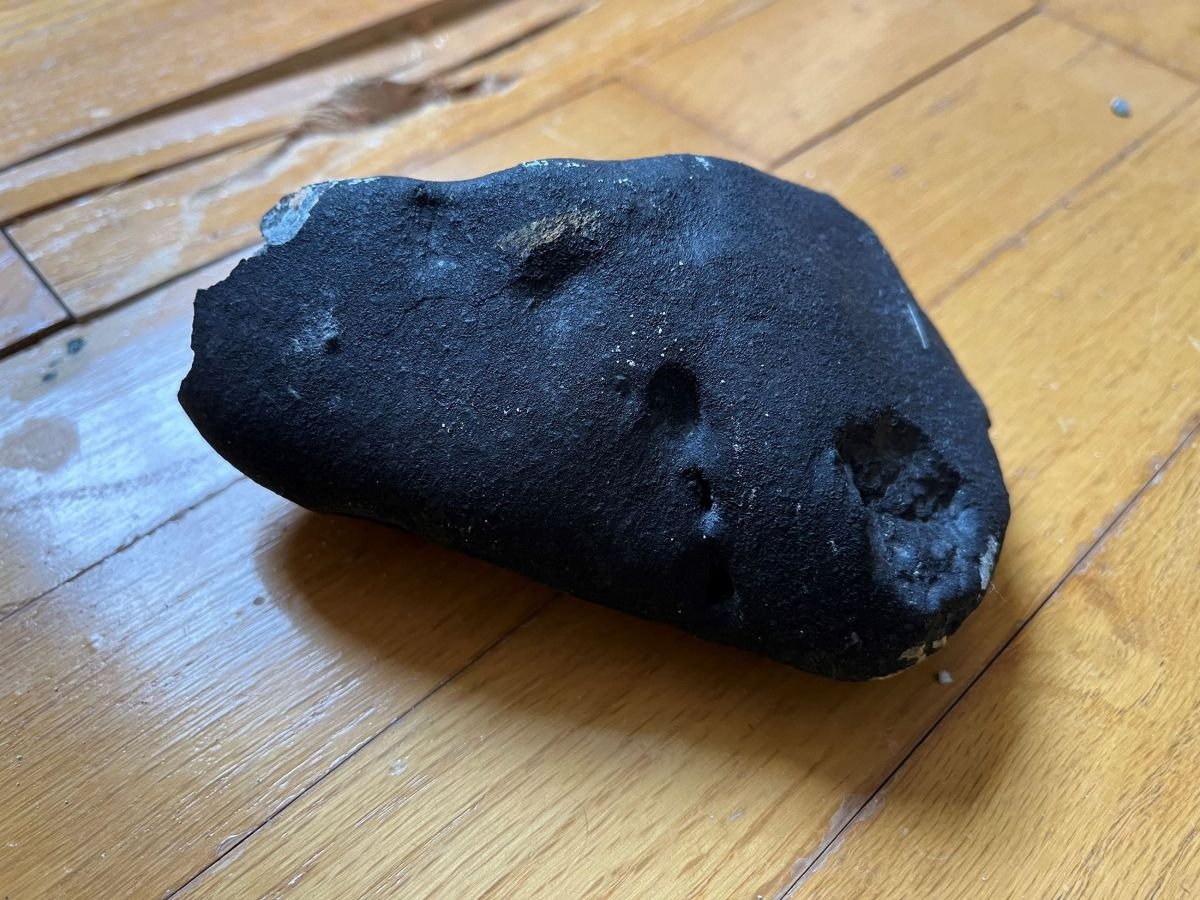4.6 Billion-Year-Old Meteorite Crash-lands Inside New Jersey Home
Language
Reading Level
Listen to Article
Alignment

When Suzy Kop entered her father's bedroom on May 8, 2023, she was stunned to find a grapefruit-sized rock next to a big dent on the wooden floor. Upon further investigation, the New Jersey resident saw two holes in the ceiling. It appeared that the stone had struck the floor with such great force that it rebounded and punched a second hole before landing back.
Kop first thought that someone had intentionally hit their roof with the rock. But upon closer examination, she realized there may be more to the bluish-gray stone, which was still warm. Her suspicions were correct. An examination by the scientists at The College of New Jersey (TCNJ) revealed the rock was a stony chondrite meteorite.
"Getting the chance to examine the meteorite yesterday was a rare and thrilling opportunity for me, as well as for a group of physics students and professors at TCNJ," said physics professor Nathan Magee. "We are excited to be able to confirm that the object is a true chondrite meteorite, in excellent condition, and one of a minimal number of similar witnessed chondrite falls known to science."
Stony chondrites make up about 85 percent of meteorites found on Earth. However, this particular rock is a rare LL-6 chondrite. The group comprises just 10 to 11 percent of observed meteorites. The space rocks have less iron than other chondrites. They have also been radically altered by the intense heat before entering the Earth's atmosphere. Like almost all meteorites, the space rocks date back to the solar system's formation 4.6 billion years ago.
Scientists are still trying to determine the space rock's origin. It was initially thought that the meteorite came from the Eta Aquarid meteor shower, which peaks in early May. The annual celestial show is the result of Earth passing through the debris shed by Halley's Comet as it whizzes past our planet every 76 years.

But the experts at Sky & Telescope magazine do not think that is the case. Eyewitness accounts indicate that the meteorite was traveling east to west when it entered the atmosphere. This is the opposite direction from which the shooting stars emanate during the Eta Aquarid shower.
Regardless of its origin, the space rock is a precious relic from the past. Most meteors disintegrate when they collide with Earth's atmosphere at high speeds. Even those that make it through rarely crash-land in densely populated communities. They usually land in oceans or deserts, including Antarctica.
Resources: Smithsonianmag.org, skyandtelsecope.org, Livescience.com, The College of New Jersey/facebook